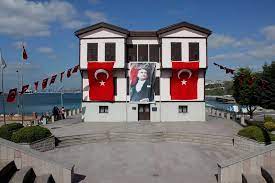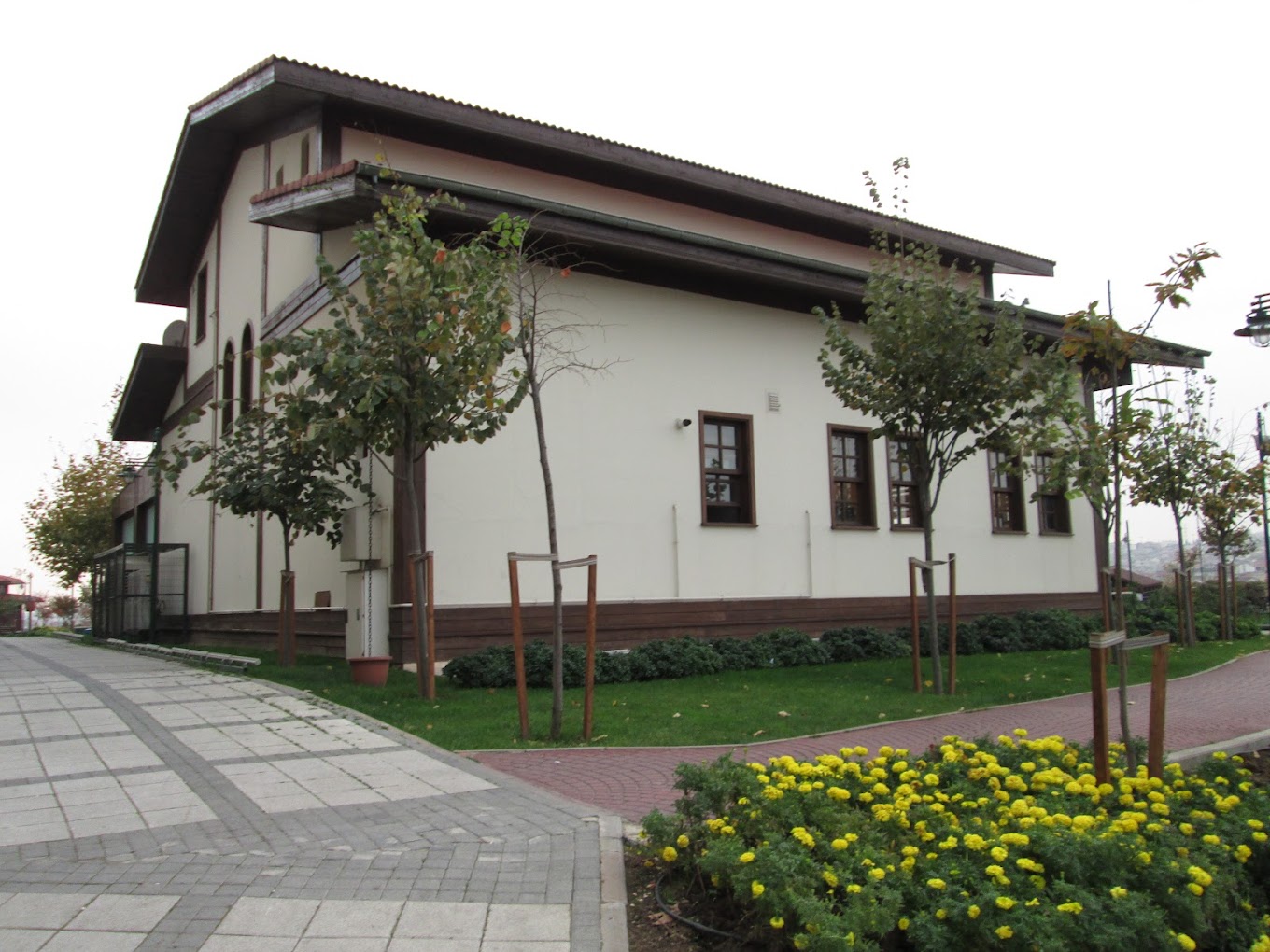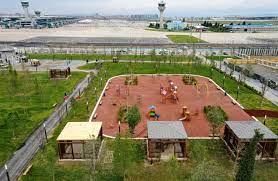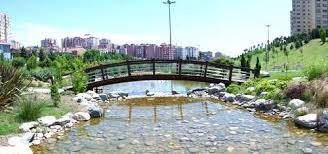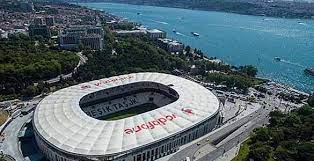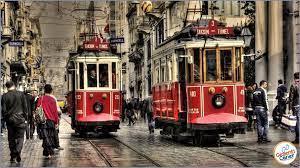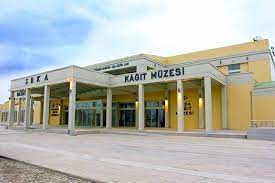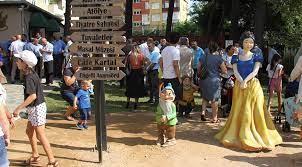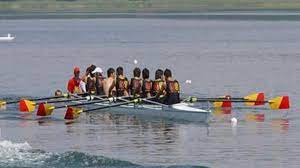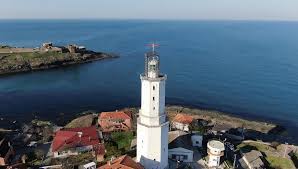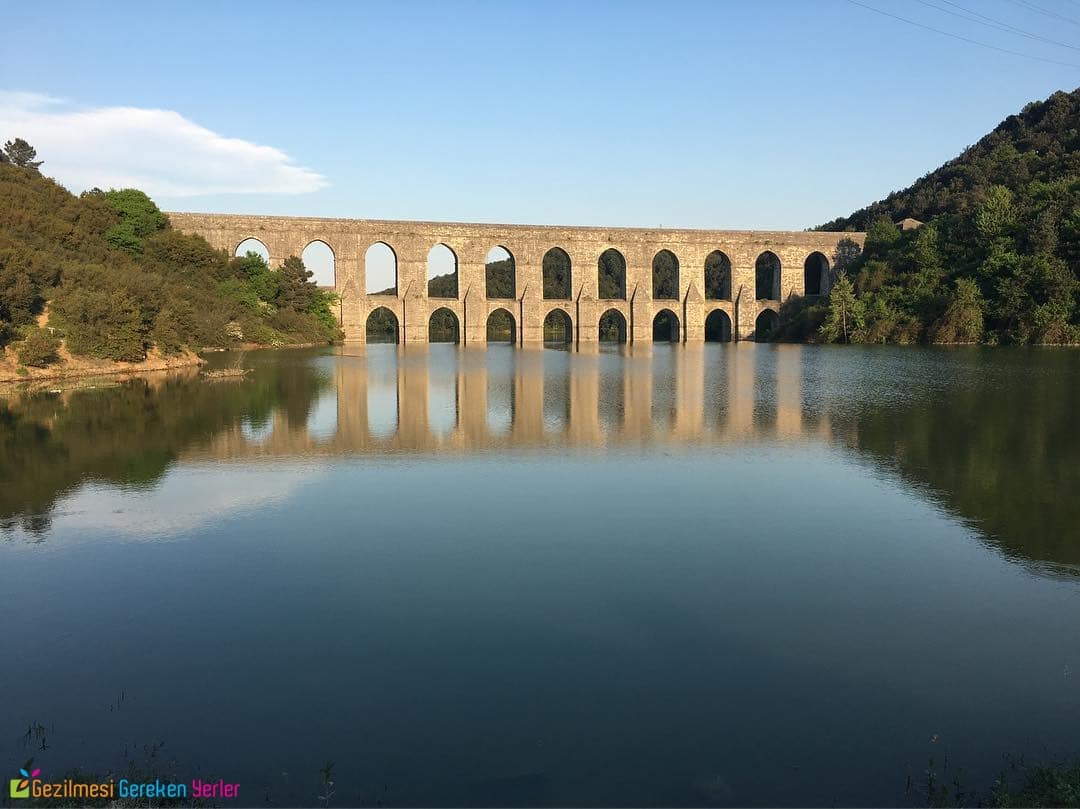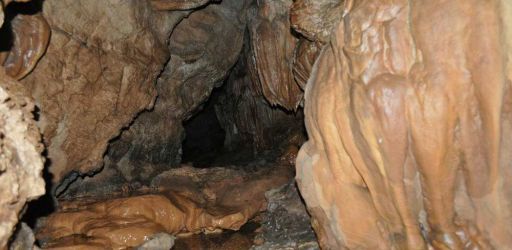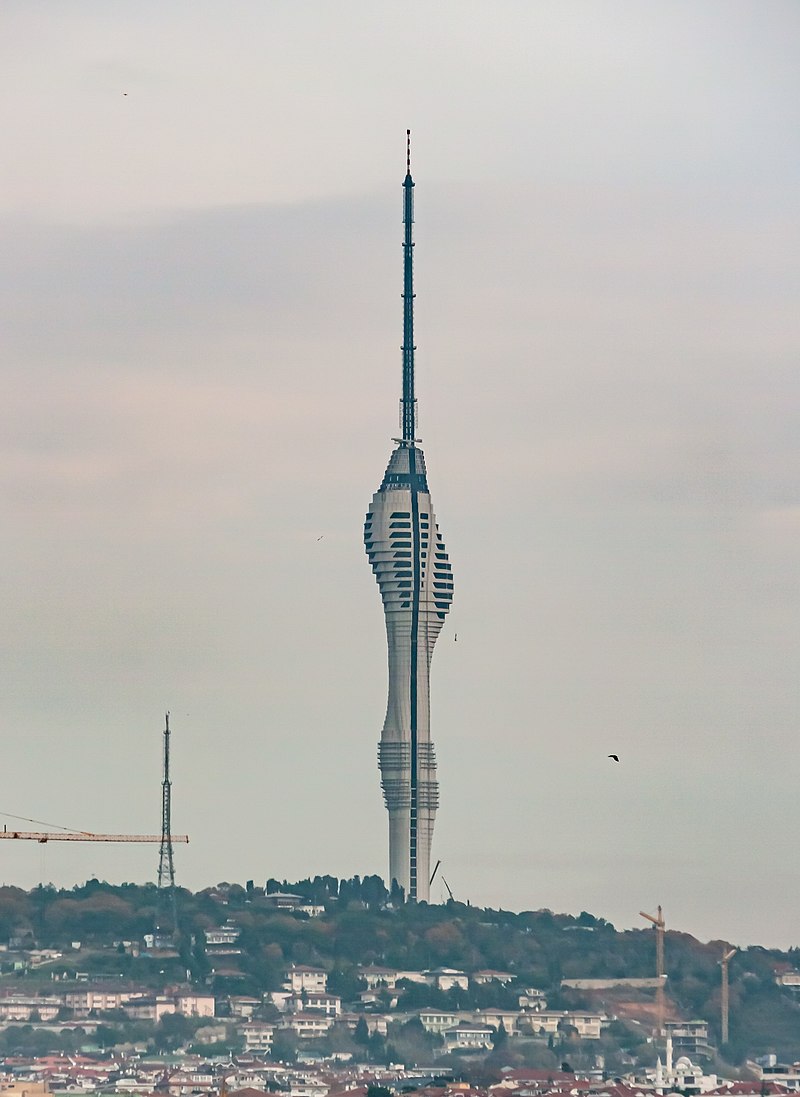Places to Visit in Zeytinburnu
Places to Visit in Zeytinburnu
- Zeytinburnu
Zeytinburnu has been Istanbul's gateway to the West, to Europe, and has been home to a cosmopolitan demographic that brings together different cultures throughout history.
Thanks to its topography parallel to the sea, it is located in the international transportation network,
It housed an important transfer route from the Romans to the Ottomans.
During the Byzantine period, Zeytinburnu was a popular settlement; It gained importance in terms of Christianity with the ‘’Panayia Church’’ and the ‘’Fish Spring’’ built by Emperor Leo I.
The region, which gained strategic importance with the conquest of Istanbul by Mehmet the Conqueror, also attracted attention with the discovery of a water source in Kazlicesme.
Kazlicesme has been the center of tanneries, slaughterhouses and candle houses since the 15th century.
Zeytinburnu, on the other hand, has become an important production center by adapting to the industrialization process.
The region, which witnessed the Ottoman industrialization process in the 19th century, experienced a rapid change during the Republican period and was elevated to the status of a district in 1957.
By the mid-1990s, slums began to be replaced by apartments, and this process led to significant changes in the social structure of Zeytinburnu.
In this period, the face of Zeytinburnu has modernized with the urban transformation projects and housing constructions carried out throughout the district.
In addition, the ZEYPORT port project was also implemented and had a significant impact on the economic dynamics of the region.
By the 2000s, Zeytinburnu began to search for a unique identity and started to reap the fruits of the investments and projects carried out during this period.
In this process, the district has been enriched not only economically, but also culturally and touristically.
Today, Zeytinburnu has positioned itself as one of Istanbul's leading cultural and religious tourism destinations with its polished historical texture and preserved local values.
Places to Visit in Zeytinburnu
- Panorama 1453
Panorama 1453 occupies an important place as a large historical painting describing the conquest of Istanbul.
This place, which offers a time travel for those who want to visit this critical event that took place in 1453, offers an impressive experience with its historical details and atmosphere.
The panorama features a huge painting painting located in the Topkapi district of Istanbul that portrays the Ottoman Empire's conquest of Constantinople.
Visitors are placed in the center of the painting, which is usually located in a large circular room, and feel the atmosphere of that era along with the details around them.
Panorama 1453 offers a visual feast full of realistic landscapes, military units, fortifications and historical figures.
It shows visitors a painting depicting the siege of Istanbul by the Ottoman army in 1453 and the Byzantines defending the city.
This historical event is supported by sound effects and thoughtful lighting, giving visitors the feeling of traveling through a time warp .
Historical panoramas, such as Panorama 1453, use sound effects and lighting combined with dioramas or large paintings, giving visitors the opportunity to experience the spirit and details of the era more closely.
These panoramas are used as a popular tool to teach about historical events and give visitors a perspective of a particular period.
There is not only Panorama 1453 but also many other historical panoramas and museums in Istanbul.
These places invite those who want to trace the past to connect more deeply with historical events.
- Yenikapi Mevlevi Lodge
Yenikapi Mevlevi Lodge has come to the fore as one of the most important centers of the Mevlevi order throughout history.
The Mevlevihane was built by the Janissary Clerk Malkoc Mehmet Efendi and started its operations in 1597 with a semahane, a masjid and 18 dervish cells.
The Mevlevihane, which served as a lodge in its early periods, has undergone various evolutions over time.
Thanks to these evolutions, the Mevlevihane has had various functions at different times.
In one period, it was used as a hospital where Turkish soldiers who participated in the Balkan and Dardanelles wars were healed, and in another period, it was a hospital where the most beautiful works of Sheikh Celebi, one of the distinguished poets of divan literature, and İsmail Dede Efendi, one of the famous composers of Sufi music, were written It has become a hotbed of music.
In addition, over time, it was also used as a children's home where orphaned children who lacked maternal and paternal affection grew up.
However, this cultural monument, which was forgotten and abandoned to its fate over time, was included in the scope of the "Culture Valley Project" initiated by Zeytinburnu Municipality in 2010 and restored in accordance with its original.
The Mevlevihane, which regained its former glory after the project, now serves as a center that trains the scientists of the future as the Alliance of Civilizations Institute, which operates under Fatih Sultan Mehmet Foundation University.
- Fisekhane
On the Kennedy Street coastal road, there is a new meeting point for sightseeing, entertainment, taste, culture and art lovers.
In the first half of the 19th century, the Fisek Factory, also known as the Fisekhane, hosted the "Zeytinburnu Fabrika-i Hümâyûnu", which was the symbol of the modernization efforts of the Ottoman army.
This was a period full of wars.
After being closed to the public for more than 100 years, the factory was put into service with a world-class restoration.
Fisekhane brings a breath of fresh air to Istanbul by combining the historical atmosphere with modern architecture.
Touristic attractions such as Sultanahmet Square, Maiden's Tower and Places to Visit in Istanbul, Fisekhane is on the List of Historical Places to Visit in Istanbul.
With its wide open spaces, cultural and artistic activities, exclusive restaurants, artisan delicacies, ease of transportation and historical atmosphere, Fisekhane stands out on its way to becoming the new meeting point of the city.
Built in 1845, the buildings have been restored to modern functions by preserving their historical identity and architectural aesthetics.
Thus, the buildings were integrated into modern life with their traces of life and historical texture.
Fisekhane Long Building, Turkish Bath, Foundry Middle Building, Command buildings and Water Tower located in Zeytinburnu Fabrika-i Hümâyûnu take its visitors on a fascinating journey with its historical atmosphere bearing traces of 19th century architecture.
The existence of this historical site shows how important it is to preserve the memory of the city in a city like Istanbul, which dates back to ancient civilizations.
Preserving heritage becomes possible when you can bring that heritage to people.
With a world-class restoration in Fisekhane, the areas that have been closed for more than 200 years have been transformed into living spaces, culture-art and living spaces and opened to public use.
- Merzifonlu Kara Mustafa Pasha Mosque
Merzifonlu Kara Mustafa Pasha Mosque is located around Kazlicesme and has been restored and opened for worship.
This mosque, which was built at the end of the 17th century by Grand Vizier Merzifonlu Kara Mustafa Pasha, one of the Ottoman captains, underwent a major renovation in 1780, but over time it was destroyed and became unusable.
Thanks to the restoration works initiated by Zeytinburnu Municipality, this historical building has been brought to the present day and opened for worship again.
During the restoration process, which started in 2011 and lasted for 4 years, the mosque has a square plan and draws attention with its roof, the interior of which is made of wooden material.
As part of the restoration, the wooden ceilings and minaret of the mosque were meticulously renovated and overhauled, and the toilets were also taken under the ground to provide a modern arrangement.
With the landscaping, the mosque was opened for worship and started to host its visitors.
- Yedikule Gashouse
Yedikule Gas Station, a 150-year-old building restored by the Istanbul Metropolitan Municipality, was built by the French in 1873 by the "Sehremanetce city administration organization" of the period and was built to provide gas and electricity to the Surici neighborhoods.
This Gazhane, which has the capacity to feed approximately four hundred lighthouses, was put into service in 1880 to supply gas to Eyup, Bakirkoy and Yesilkoy.
The gas obtained from the Yedikule Gashouse, which appeared on the stage of history as Istanbul's first "public" gas factory, was used to meet the lighting needs of Istanbul.
After 1887, the business was transferred to Hasan Tahsin Efendi, a merchant of Sirkeci Pier, for 40 years.
In 1926, the Uskudar - Kadikoy Gas Company bought the gas plant and operated it for 19 years.
The facility was connected to IETT in 1945.
This facility, which served as an industrial heritage and production site, turned into a unique complex with the establishment of lodgings and workshops and operated in Surici until 1993.
As a result of the restoration works initiated by the Istanbul Metropolitan Municipality, Yedikule Gashouse was brought to the cultural life of Istanbul.
Located on the European side after Hasanpasa Gashouse, this facility is ready to be the new meeting point for domestic and foreign guests coming to Istanbul and our city.
You can access information about the events to be held at Yedikule Gashouse on the official websites of the relevant institutions and participate in these events.
- Seyyid Nizam Mosque and Tomb
During the reign of Yavuz Sultan Selim, the Naqshbandi sheikh Seyyid Nizameddin Efendi, who came from Baghdad and settled in Istanbul and was a descendant of Hazrat Hussein, founded the Tekke, also known as Fish Zawiye, and gave lectures.
This lodge, also known by the nickname Mahi, was rebuilt in 1872 by Ebrunigar Kalfa from the harem of the palace.
During the Republican period, after the closure of the lodges, this area was used as a mosque.
As a result of the arrangement works carried out by Zeytinburnu Municipality in 2013 - 2014, the area around the Tomb and Lodge was arranged with a modern design and a large mosque was built in this area.
Seyyid Nizam Mosque and Tomb is home to one of the oldest lodges and lodges in Istanbul.
This historical place represents both religious and cultural richness and plays an important role in preserving the historical texture of Istanbul.
- Merkezefendi Mosque and Tomb
A historical area located in Zeytinburnu Merkezefendi, which was called "outside Mevlanakapı", which was called Mevlevihane Yenikapı during the Ottoman period.
Sah Sultan, the daughter of Yavuz Sultan Selim, built the structures that were the complex of the order after the death of Merkez Efendi.
During this period, between 1552 and 1572, mosque and tawhidhane additions were made, and then in 1837 it was restored by Mahmut II.
The mosque was last repaired in 1965.
There are historical buildings such as Merkez Efendi Tomb, Çilehane, Abdülbaki Pasha Library, Turkish Bath and cemetery around Mevlanakapı Mosque.
It is known that Merkez Efendi invented mesir paste, which is his own invention, during his time in Manisa to work as a sheikh in the lodge of the complex built by Ayse Hafsa Sultan, the wife of Yavuz Sultan Selim, and as a physician in the darussifâ.
When Hafsa Valide Sultan fell ill, she was cured thanks to the famous mesir paste consisting of 41 spices made by Merkez Efendi.
Hafsa Sultan wanted this healing paste to be distributed to everyone, and Merkez Efendi distributed the mesir paste to the people on March 22 through the minarets and domes of the Sultan Mosque next to the zawiya.
This tradition has survived to the present day, and mesir paste festivals are held in Manisa on March 22 every year.
- Sp. Pirgic Armenian Hospital
Surp Pirgic Armenian Hospital was established in 1832 with the permission of Mahmud II and the efforts of Harutiun Amira Bezjian for the treatment of mental and chest diseases.
The hospital building, which was built by Amira Balian and Hovannes Amira Serverian, was renovated in 1906 with the project of Kevork Aslanian.
Over time, it expanded with the addition of additional units such as an old age home, a nursing home, a madhouse, and an orphanage for boys and girls.
Surp Pirgic Armenian Hospital continues its diagnosis and treatment services in many medical branches by preserving its historical texture today.
There is also the "Bedros Şirinoğlu Museum" within the hospital.
This museum was created to introduce the historical heritage and background of the hospital to visitors.
Surp Pirgic Armenian Hospital has been an institution that has been providing an important service in the field of health since its establishment and has attracted attention with its cultural heritage.
- Hagia Paraskevi Greek Orthodox Church & St. Friday Church
Located in Kazlicesme and also known as the St. Friday Church, this temple is one of the symbols of Muslim and Christian fusion in Zeytinburnu.
In the past, the services held in the Hagia Paraskevi Church were held on Fridays, which is unusual in the Orthodox tradition.
During the conquest of Istanbul, Mehmed II's room was established near the Hagia Paraskevi Church.
When some statesmen suggested that the church be converted into a mosque for Friday Prayer, Mehmed II opposed this request and ordered a mosque to be built in the immediate vicinity of the church.
Gennadius, the first patriarch elected after the conquest, decided to move the Sunday services in the church to Friday in order to show his gratitude to Mehmed the Conqueror.
Today, due to the decrease in the Greek population in the region, services are held in this small church only on Easter.
- Kazlicesme Fatih Mosque
Kazlicesme Fatih Mosque was built opposite the Hagia Paraskevi Greek Orthodox Church during the conquest of Istanbul by Fatih Sultan Mehmet.
After a repair in 1813, it went through a second restoration process in 1954 with the contributions of the tradesmen of the region.
However, only the lower body of its minaret has been able to preserve its original form until today.
With the removal of the large leather factories around the mosque, it was reopened for worship in 2013 as a result of a restoration work carried out by the Zeytinburnu Municipality.
In this restored form, Kazlicesme Fatih Mosque has a historical and cultural texture and serves as an important worship center of the region.
- Fish Spring
Fish Spring is known as "Zoodohos Pigi", that is, "Life-giving source".
It is dedicated to the Virgin Mary and is one of the well-known springs of Istanbul.
It is located in the Greek Orthodox Monastery of the Virgin Mary of Fish on the Spring, Kozlu and Ayazma road.
The Fish Spring, which has survived to the present day, holds a mirror to the past by preserving its historical traces.
This holy site is not only of religious significance, but also contributes to Istanbul's rich cultural heritage.
Fish Spring offers visitors the opportunity to make a historical journey and be in a spiritual atmosphere.
- Fish Virgin Mary Greek Orthodox Monastery
With the edict of Mahmud II dated 1833, it was allowed to build a large church next to Fish Ayazma.
When you step into the courtyard of the church, you come across the church.
On the left, the two-storey building is used as a service building, where funerals, meetings and special occasions are served.
The two-storey building, seen at the back on the right, is reserved for the use of nuns.
The single-storey building on the left is the entrance to Fish Spring.
According to rumors, it is accepted that Spring and the church were built for the first time by Emperor Leon I in the 5th century.
One summer day, while touring the surroundings, the young Emperor Leon encounters a blind old man who wants to drink water.
A divine voice describes the source of water to Leon.
As a result of Leon and the blind man washing their faces with this water, the eyes of the blind man are opened and the good news is given that Leon will become emperor.
After this event, Leo was promoted to general and was crowned imperial in 457.
A small chapel was added to the spring, which was revived by Emperor Justinian I in 560.
The spring and church, which were damaged as a result of the armies that wanted to seize the city between 705 and 869 and the earthquakes, were repaired.
The region was destroyed by the Bulgarian and Slavic armies in 924 and the Latin armies in 1204, and was abandoned when the people moved to the city walls in 1422.
However, it was reopened in 1727 with the permission of Ahmed III.
The spring, which was damaged by the earthquake in 1894 and the fire of September 6-7, was last repaired in 1960.
The cellar part of Spring is covered with a vault, in the cellar, there is a pool on the right where the spring water flows with four fountains, while on the left there is a marble iconassasis.
The ceiling and walls of the cellar are adorned with hand-drawn decorations and equipped with various icons.
According to the legend; There are colorful fish in the pond.
The legend of the red and black fish is as follows: When a man who was frying fish near the spring in the days of the conquest was told that the Turks had captured the city, the man replied: "I believe that the fish in this pan will leap and come to life again, as much as I believe that the Turks have taken the city!".
Thereupon, the fish come to life and jump into the pool, and these fish give the name Spring.
- Historical walls and gates in Zeytinburnu
The historical walls and gates in Zeytinburnu have played an important role in Istanbul's defense history and represent the rich cultural heritage of these regions.
Some historical walls and gates in Zeytinburnu
1. Golden Gate & Gilded Gate: Located on the historical walls in Zeytinburnu, the Golden Gate draws attention with its eye-catching decorations.
2. Yedikule Gate: Yedikule Gate, one of the important crossing points of the city walls in Zeytinburnu, offers a historical atmosphere.
3. Belgrade Gate: Named after the Ottoman victory over Belgrade, Belgrade Gate is one of the entry points of the historical city walls.
4. Silivri Gate: Silivri Gate, which is identified with the victory of the Ottomans in Silivri, has witnessed important moments in the history of Istanbul.
5. Mevlana Gate & Mevlevîhane Gate: Mevlana Gate takes its name from the historical Yenikapi Mevlevîhane nearby and forms a transition point of the city walls.
6. Topkapi: Located in Zeytinburnu, Topkapi is an important gate located on the historical walls of Istanbul.
It may have gotten its name from its proximity to Topkapi Palace.
From the moment it was built, it has been subjected to siege attempts many times and has been overcome in two important historical events.
First of all, during the Crusade carried out by the Catholic Latins in 1204, those who tried to invade Istanbul managed to overcome this magnificent defense system.
The invasion during this period affected the Orthodox Byzantine Empire and transferred control of the city to the Latin Empire.
The conquest of Istanbul, which "closed an era and opened a era" and left its name on the pages of history.
However, the second time the walls were breached throughout history, and perhaps the most important one, took place in 1453, the so-called Blessed Conquest.
The Ottoman army, under the command of Sultan Mehmet the Conqueror, successfully conquered Istanbul and captured the city by besieging the historical walls.
This event both showed the power of the Ottoman Empire and marked an important period on the historical peninsula.
Istanbul became the capital of the Ottoman Empire and this conquest took its place among the great historical events.
The walls and gates in Zeytinburnu are important symbols that reflect the history of the region.
These historical buildings offer visitors the opportunity to experience the atmosphere of the past.
From Zeytinburnu, you can easily reach Istanbul Airport (IST) and Istanbul Sabiha Gokcen Airport (SAW) on time.
Transportation Options: You can easily reach Istanbul Airport (IST) and Sabiha Gokcen Airport (SAW) by using public transportation options, Municipal Buses, Metro and Tram.
Before using these lines, you should check and select the appropriate timetables for your trip on the website.
Air transfer lines: You can reach Istanbul Airport (IST) and Istanbul Sabiha Gokcen Airport (SAW) comfortably and effortlessly with your Airport Transfer reservations made on the Airtransferlines website.
With Airtransferlines, it provides a comfortable, unique Airport Transfer experience with the latest model luxury vehicles.
Click www.airtransferlines.com to take advantage of the advantages of Airtransferlines, to find the right vehicle and driver for you with a wide range of transfer options, to get information about your destination or to make a reservation.
AIRTRANSFERLINES is your personal TRANSPORTATION advisor.
Posts you might like
Are you a professional driver? Become a ATL Driver in your City
Join our driver team and be a part of the global ATL experience. ATL connects you with travelers who need a lift from the airport or port and desire a warm introduction to the city.
SIGNUP NOW!
.jpg?alt=media&token=13da9acd-7e56-46f7-a468-e17016f3de33)


